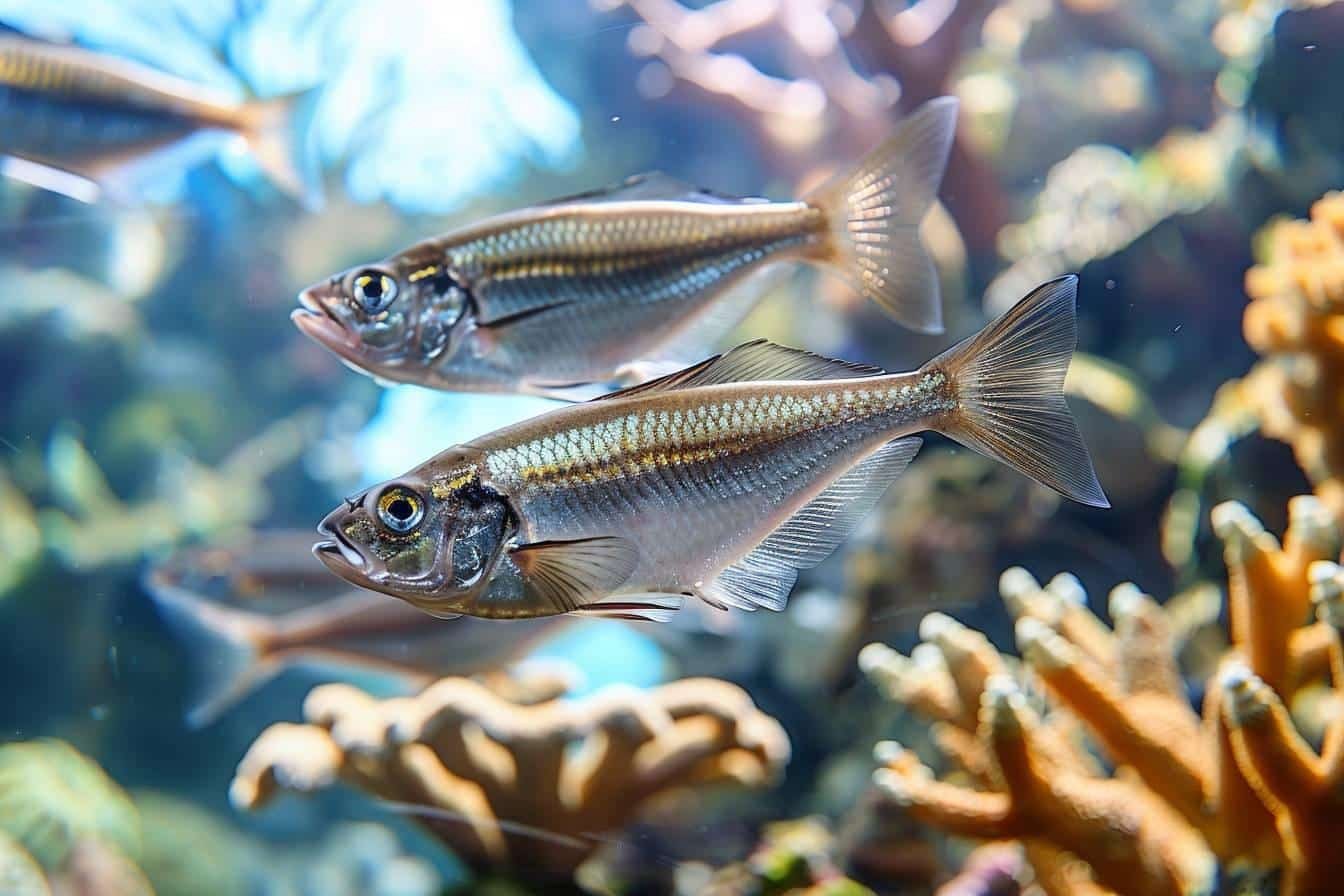The article in brief
The article details the optimum diet for tilapia nilotica for healthy growth and efficient production. Here are the key points:
- A balanced composition with 20-25% proteins is crucial
- La frequency and the quantity meals vary according to the size of the fish
- Distribution techniques such as scattering on the fly promote uniform growth
- La managing the risk of dwarfism and optimising the nutrient quotient are essential
- A sustainable approach combines direct food and fertilising the pond
L'feeding tilapia nilotica is a fascinating subject that I'd like to discuss with you today. As a pet shop floor manager, I've been able to observe at close quarters the nutritional needs of this captivating species. Let me guide you through the essential aspects of their diet to optimise their growth and health.
Ideal composition of food for tilapia nilotica
To ensure optimum growth for your tilapia, it's vital to provide them with a balanced diet. Here's the recommended basic composition:
- 65% rice flour
- 18% of groundnut cake
- 12% of wheat remoulding
- 4% fish meal
- 1% of shellfish
This formulation achieves an average conversion rate of 2.32 kg of feed to produce 1 kg of fish. This is a fairly efficient ratio, but there are ways of improving it still further.
Specific protein requirements
Nile tilapia have well-defined protein requirements. For optimum growth, their diet should contain between 20 and 25% proteins. I've found that sticking to this range avoids growth problems while keeping costs reasonable.
Varied food sources
To diversify your nutritional intake, here are a few effective formulations that I've had the opportunity to try out:
| Growth stage | Recommended composition |
|---|---|
| Reproduction | 50% peanut meal + 50% wheat bran |
| Pre-ripening | 40% peanut meal + 40% wheat bran + 20% fish meal |
| Magnification | 75% rice bran/wheat + 15% cotton cake + 10% fish meal |
| Magnification (alternative) | 45% groundnut meal + 45% rice bran/wheat + 10% fish meal |
These blends cover the nutritional needs of tilapia nilotica at every stage of its life.
Feeding strategies for optimal growth
There's more to feeding your tilapia properly than the composition of their food. Frequency and quantity are just as important. Let me share with you a few tips I've learnt over the years.
Meal frequency and times
To promote regular growth, we recommend that you feed your tilapia at least twice a day. The best moments are :
- In the morning between 8am and 9am
- Afternoon between 3pm and 4pm
This routine helps maintain a constant level of energy throughout the day. I've noticed that fish are more active and healthier when you stick to this schedule.
Adjusting quantities according to size
The feeding rate, expressed as a percentage of the total biomass, should be adjusted according to the size of the tilapia. Here's a guide that I've developed from experience:
- 15% for fish weighing 5 to 10g
- 10% for those weighing between 10 and 20g
- 5.3% for the 20-50g band
- 3% for 50-150g
- 2.5% for 150-200g
- 2% for 200-250g and over
These percentages help to optimise growth while avoiding wastage. Feel free to adjust them slightly according to the behaviour of your fish.
Feed distribution techniques
The way in which you distribute food can greatly influence its effectiveness. There are two tried and tested methods:
- On the fly Feeding: This method involves spreading the feed over the entire surface of the pond. It ensures even distribution and stimulates fish activity.
- Within a framework Place a floating frame in the corner of the pond and place the food on it. This technique allows you to better control consumption and reduce losses.
Personally, I alternate between these two methods to keep the tilapia on their toes and encourage even growth in the group.

Challenges and solutions for efficient nutrition
Despite our best efforts, feeding tilapia can sometimes pose certain challenges. Here are some common problems and the solutions I've experienced over the years.
Managing the risk of dwarfism
Dwarfism is a serious problem that can occur in the event of overcrowding. To avoid it, you need to :
- Maintaining an adequate population density
- Ensuring an adequate and balanced diet
- Regular sorting to separate fish of different sizes
I've found that these measures considerably reduce the risk of dwarfism and result in a healthy population of tilapia.
Optimising the nutrient quotient
A good nutrient quotient is essential for efficient production. The aim is to obtain a ratio of less than 3, i.e. less than 3 kg of feed to produce 1 kg of fish. To achieve this, I recommend :
- Using high-quality food
- Precise adjustment of dispensed quantities
- Regularly monitor fish growth
By following these tips, you'll optimise the use of resources while promoting the rapid, healthy growth of your tilapia.
Supplementation by fertilisation
Although direct feeding is crucial, let's not forget the importance of fertilising the pond. This method stimulates the production of plankton, a natural source of food for tilapia. And yet, fertilisation alone is not enough for optimum growthThis is also the case for other species such as the comet fish.
For best results, I recommend combining :
- Regular fertilisation of the pond
- Complete feed adapted to each stage of growth
- Careful monitoring of water quality
This comprehensive approach makes the most of tilapia nilotica's eclectic diet, while ensuring rapid growth and efficient production.
Towards sustainable tilapia nilotica production
As an aquaculture enthusiast, I'm convinced that the future of tilapia nilotica production lies in sustainable practices. Here are some of the avenues I am currently exploring:
- Increased use of local plant protein sources
- Development of aquaponics systems combining the cultivation of fish and plants
- Optimising closed circuits for better water management
These approaches will not only improve the efficiency of production, but also reduce its environmental impact. It's an exciting challenge that I'm delighted to take up every day in my job.
In short, feeding tilapia nilotica is an art that requires care, precision and adaptability. By following this advice, you'll be able to optimise your fish's growth while preserving their health. Don't forget that every farm is unique, so don't hesitate to adjust these recommendations according to your observations. Good luck in your aquaculture adventure!
External sources :
